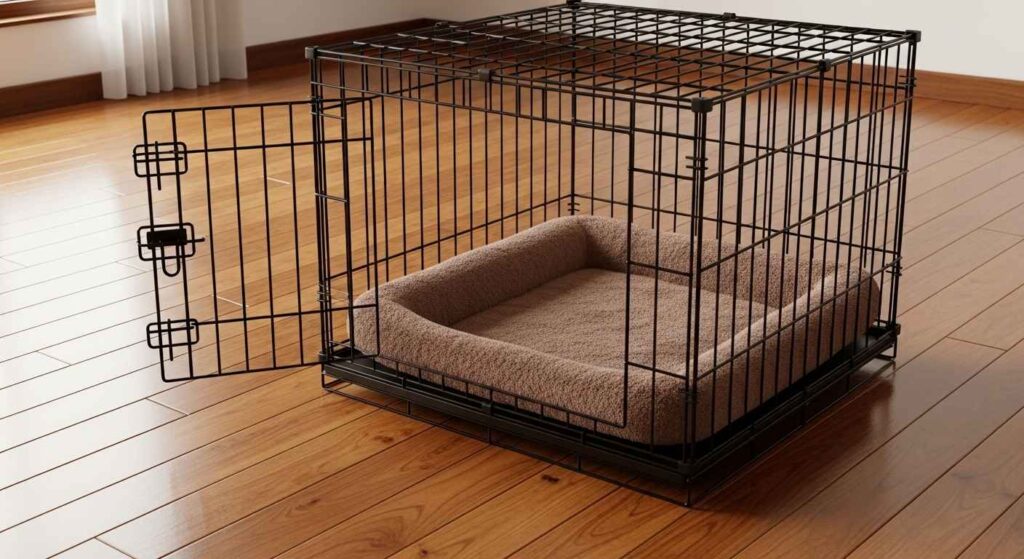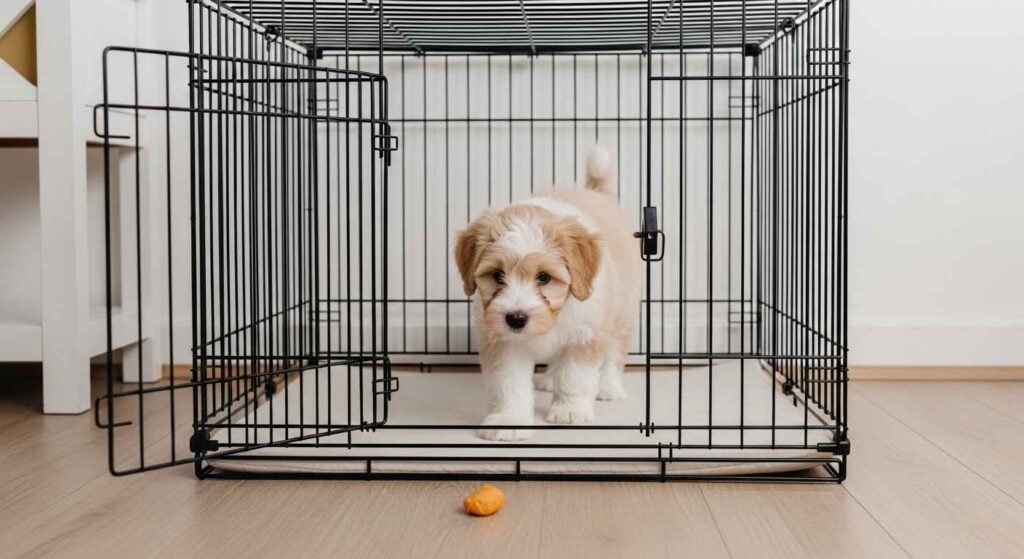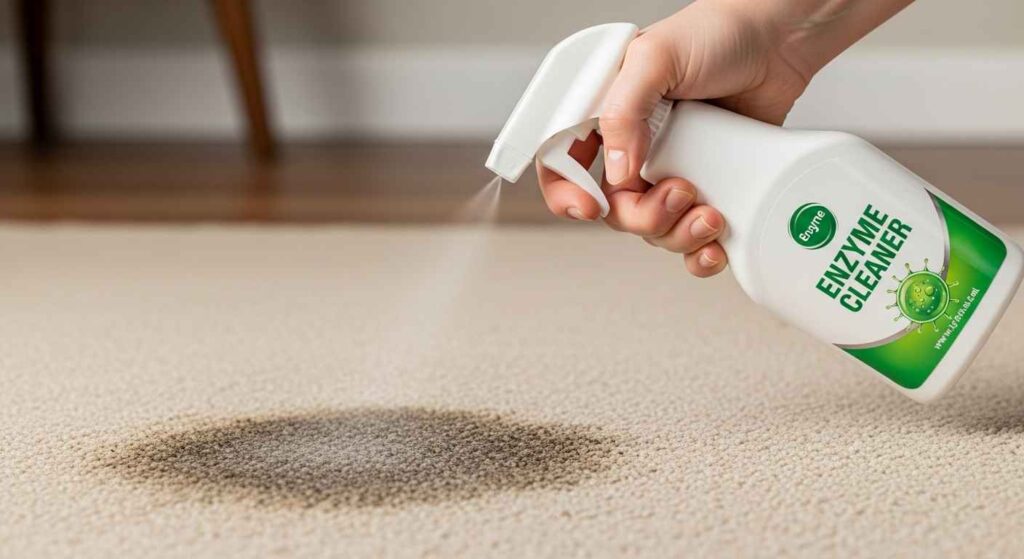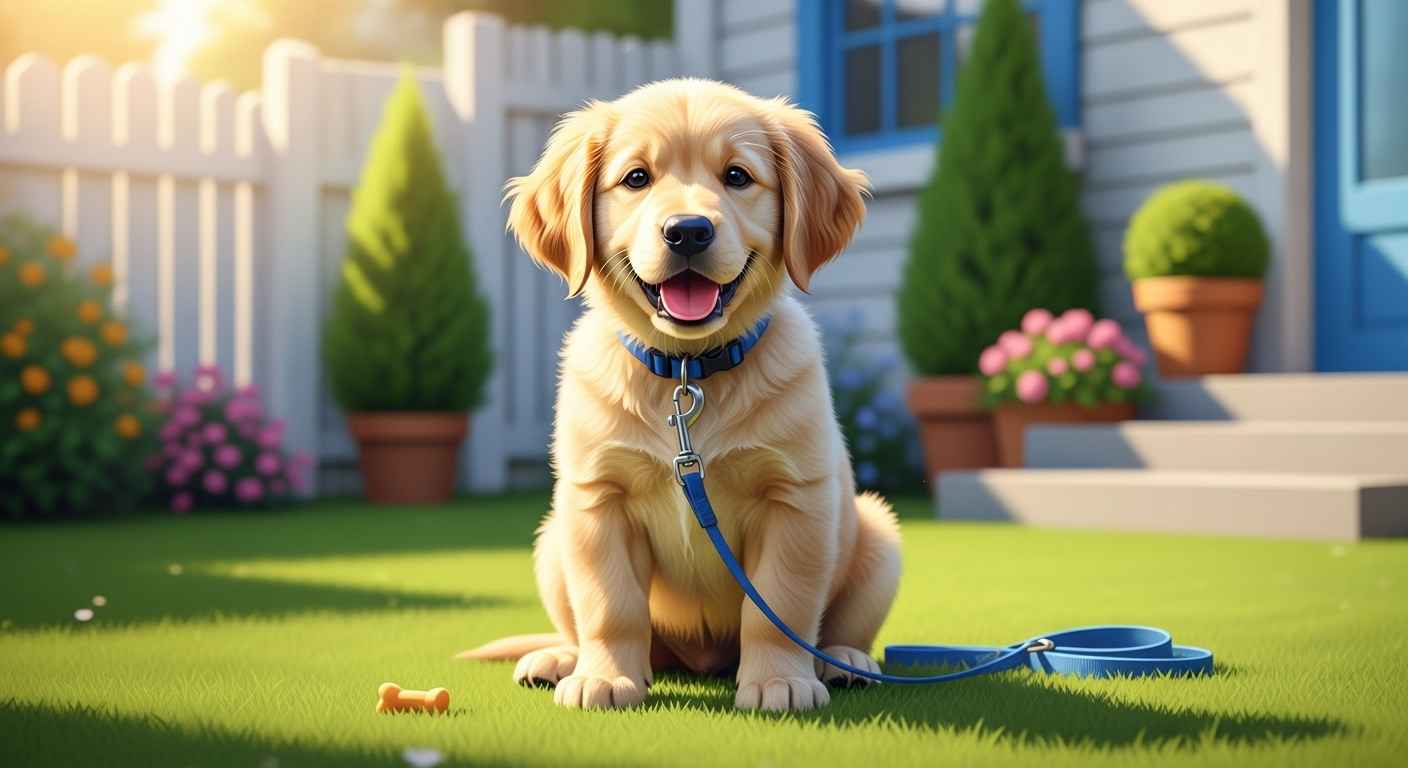House training teaches your dog to go to the bathroom outside. It builds good habits and keeps your home clean. Most dogs learn with patience and a clear plan. This guide covers steps for puppies and adult dogs. Follow these to prevent messes and strengthen your bond.
Why House Training Matters
House training creates a stress-free home for you and your pet. Puppies can start at eight weeks old. Adult dogs, especially rescues, may need retraining. A consistent routine leads to success. Start as soon as your dog arrives.
Supplies You Need
Gather these items to make training easier:
- A crate sized for your dog to stand and turn but not too spacious.
- A leash for outdoor trips.
- Treats for positive reinforcement.
- Enzymatic cleaner for cleaning accidents.
- Puppy pads for small breeds or indoor training.

Create a Daily Schedule
Dogs love routines. Set fixed times for meals, play, and bathroom breaks. Feeding at the same hours helps predict when they need to go.
Take your dog outside:
- First thing in the morning.
- After every meal.
- After naps or playtime.
- Every hour for puppies under three months.
- Before bedtime.
Use a leash and go to the same spot. Say a cue like “go potty.” Wait until they finish, then praise and give a treat. This connects the action to the reward. For safe feeding, use our pet food safety checker. Avoid upset stomachs by checking what fruits can dogs eat.
Use Crate Training
Crates use a dog’s instinct to keep their space clean. Use the crate when you can’t supervise. Puppies can stay in for their age in months plus one hour (e.g., a two-month-old can last three hours).
Steps for crate training:
- Introduce the crate with treats inside.
- Feed meals in the crate.
- Ignore whining initially.
- Take them outside immediately after opening the crate.
Never use the crate as punishment. It should feel like a safe space.

For crate training tips, visit the American Kennel Club.
Spot the Signs They Need to Go
Dogs show signals before they need to go. Watch for:
- Sniffing the floor.
- Circling or pacing.
- Whining or looking restless.
- Moving to a corner.
When you see these, take them out quickly to avoid accidents. Over time, teach them to signal, like sitting by the door. If your dog seems off, check for health issues with our pet symptom checker.
Deal with Accidents
Accidents are normal during training. Stay calm. Do not yell or punish, as this can scare your dog and slow progress.
What to do:
- If caught in the act, say “outside” and take them out.
- Clean messes with enzymatic cleaner to remove odors.
- Increase supervision to prevent repeats.
Frequent accidents may signal a health issue. Visit a vet or read about common dog owner mistakes to stay on track.

Tips for Adult Dogs
Adult dogs often learn faster but may have old habits, especially rescues. Use the same routine as puppies. For shelter dogs:
- Take them out more often initially.
- Reward heavily for going outside.
- Watch for marking behavior in males.
Persistent issues might indicate health problems like DCM in dogs. Check with a vet.
Fix Common Issues
Here are solutions to common problems:
- Dog goes inside after being out: Stay outside longer until they go.
- Nighttime accidents: Limit water before bed and take them out late.
- Small breed struggles: Start with puppy pads indoors, then transition outside.
- Regression: Review the schedule and check health with our pet symptom checker.
Training time varies. Puppies take weeks to months. Adults often learn faster with consistency. For breed-specific tips, try our pet breed finder quiz.
People Also Ask: Common Questions
- How long does it take to house train a dog? Most puppies take 4-6 months. Adults may learn in weeks with steady effort.
- Can older dogs be house trained? Yes, use the same steps but expect some habits to take longer to break.
- What if my dog keeps having accidents? Check for medical issues and tighten the schedule.
- Are some breeds harder to train? Small breeds like Chihuahuas may need extra patience. Use our pet breed finder quiz to learn about your dog’s traits.
When to Seek Help
If training doesn’t work after a month, consult a vet to rule out infections. A professional trainer can help with stubborn cases. For multi-pet homes, read how to introduce a cat to a dog or use our pet compatibility checker.
Final Thoughts
House training takes time and patience. Stick to a routine, use rewards, and stay consistent. Your dog wants to learn. With these steps, you’ll have a house-trained pet soon. Share your tips or questions in the comments below.
For more pet care advice, check our guides on can dogs eat broccoli or what fruits can dogs eat. Use our pet age calculator to track your dog’s milestones.
